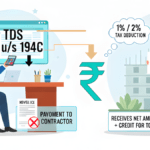
Indian Stock Market Trends and Outlook On Wednesday, 15-10-2025
India’s stock market saw dramatic moves on October 14. Tech and healthcare dominated gains while auto and metals dragged indices lower. Explore performance patterns, sector signals, and what these swings reveal about upcoming Nifty and Sensex trends before Wednesday’s trade setup.
The Indian stock market continues to fascinate with its resilience and volatility in October 2025. As global cues remain mixed and domestic policy signals shape investor decisions, indices like BSE Sensex, NSE Nifty 50, and Nifty Bank have entered a phase of range-bound consolidation, punctuated by sectoral rotation and profit-booking. This post delivers a comprehensive, data-rich perspective on market movements, economic influences, top stocks to buy, and a guide to navigating today’s equity landscape.
Market Overview: Key Indices on 15 October 2025
BSE Sensex, NSE Nifty 50, and Bank Nifty Performance
- The BSE Sensex closed at 82,029.98, declining by 297.07 points or 0.36%.
- NSE Nifty 50 ended at 25,145.50, down 81.85 points or 0.32% from the previous session.
- Nifty Bank settled at 56,496.45, losing 128.55 points or 0.23%, as banking stocks remained under pressure.
- Broader indices like Nifty Midcap 100 dropped by 0.75%, and Smallcap 100 fell by 0.89%, reflecting deeper weakness in non-blue-chip stocks.
Sectoral Performance Snapshot
- Pharma, Consumer Durables, Metal, Media, and PSU Banks were the worst-hit, each down around 1%.
- Bank stocks faced a negative mood, but select names showed resilience thanks to strong earnings and asset quality.
- IT and Healthcare posted isolated gains with names like Tech Mahindra and Max Healthcare moving up.
Economic Indicators Shaping the Market
India’s GDP Growth and Economic Pulse
- India’s projected GDP growth for FY 2025-26 is now 6.8%, up from 6.5% earlier, signaling sustained economic momentum.
- Strong infrastructure spending, cautious fiscal discipline, and demographic growth act as tailwinds.
Inflation and Price Stability
- CPI inflation dropped to 1.54% in September 2025, well below the RBI’s lower tolerance band, driven by softening food prices and energy rates.
- Stable inflation provides room for consumer demand revival and helps improve corporate margin outlook.
RBI Repo Rate and Policy Stance
- The RBI maintained the repo rate at 5.5% in October, adopting a neutral stance focused on growth and liquidity management.
- This policy continuity anchors sentiment in banks, NBFCs, and rate-sensitive stocks such as housing and consumption.
Unemployment Trends
- Urban unemployment remains a concern around 7.2–7.4%, but rural job trends are stabilizing on the back of post-monsoon labor demand and rural spending initiatives. Steady hiring in IT, financial services, and healthcare also offsets some macro vulnerabilities.
Latest News Impacting Market Sentiment
- Renewed US-China trade tensions, port tariffs, and cautious global markets resulted in foreign fund outflows.
- Q2 earnings reports were mixed, with robust performances in healthcare and IT, while auto and metals faced challenges.
- Rate-cut hopes built up after lower inflation, giving a boost to financials and consumer sectors.
- Investor sentiment remains skittish, with preference for quality stocks and defensive sectors as volatility increases.
Nifty50, Bank Nifty: What to Expect
Index Outlook and Trading Range
- Nifty is expected to consolidate between 24,800 and 25,300, with 25,000 as crucial support and 25,300 as immediate resistance. A break below support may see higher volatility and bear dominance.
- Bank Nifty faces headwinds but selective buy opportunities persist in fundamentally strong lenders.
- Bulls hold technical advantage if indices stay above key moving averages and Bollinger bands. Momentum indicators like RSI and MACD show an underlying trend but with short-term caution.
Top 10 Stocks to Buy on NSE/BSE (October 2025)
These recommendations are based on valuation, growth prospects, dividend yield, sector momentum, and recent news or earnings. Data and rationale are sourced from leading brokerages including Axis Securities.
| Stock Name | Sector | Rationale & Metrics | Target Price | Upside Potential |
| Max Healthcare | Healthcare | Robust earnings growth, domestic + medical tourism, 25%+ margins, high capacity utilization | 1450 | 28% |
| Hero MotoCorp | Auto | Premiumisation, rural stabilization, EV push, double-digit volume, improving margins | 6245 | 11% |
| SBI | Banking | Strong demand, controlled credit cost, pipeline Rs 7.2 lakh crore, benign slippages | 1025 | 17.9% |
| HDFC Bank | Banking | Post-merger, deposit stability, digital lending, margin recovery, 14-15% credit growth | 1150 | 16.6% |
| Bharti Airtel | Telecom | Tariff hike potential, robust ARPU, Africa stabilization, broadband scaling | 2300 | 20.7% |
| Bajaj Finance | NBFC | Disciplined lending, improved NIMs, asset quality, 22–23% loan growth, strong balance | 1100 | 8.1% |
| APL Apollo Tubes | Industrial | Capacity expansion, infra boom, consistent margins, low leverage | 1950 | 12.3% |
| Prestige Estates | Real Estate | Robust cash flow, luxury & commercial launches, pan-India scaling | 2000 | 30.2% |
| Kalpataru Projects | Infra/Engineering | Diversified order book Rs 55000+ crore, margin stability, infra cycle beneficiary | 1470 | 16.4% |
| Lupin | Pharmaceuticals | US respiratory launches, India formulations, expanding generics, turnaround story | 2400 | 25% |
Risk Assessment and Diversification
- Sector-specific risks: Exporters face currency volatility and tariff headwinds, especially in IT and pharma.
- Macroeconomic shifts: Unforeseen inflation spikes, global trade tensions could disrupt further gains.
- Portfolio tip: A diversified mix from banking, healthcare, telecom, consumer goods, and infrastructure helps spread risk.
Top 10 Gainers and Losers (as of 14 October 2025)
Here is a table summarizing the top 10 gainers and top 10 losers on the Indian stock market as of 14 October 2025, including sector insights for context:
| Top 10 Gainers | Sector | Top 10 Losers | Sector |
| Tech Mahindra | IT | Tata Motors | Auto |
| Wipro | IT | Dr Reddy’s Laboratories | Pharma |
| Apollo Hospitals | Healthcare | Bajaj Finance | NBFC |
| Power Grid Corporation | Utilities | Bharat Electronics | Industrials/Defence |
| SBI Cards | Financial | JSW Steel | Metals |
| Trent | Retail | Hindalco | Metals |
| Linde India | Industrials | Cadila Healthcare | Pharma |
| Aurobindo Pharma | Pharma | PVR Inox | Media/Entertainment |
| Marico | Consumer | Canara Bank | Banking |
| Godrej Properties | Real Estate | Tata Consumer Products | Consumer Goods |
This table covers sector leaders, earnings influences, and recent trading sentiment for each listed stock.
Sector Focus: IT, Banking, Pharma, and Consumer Goods
- IT and Healthcare continue to show resilience, benefiting from global demand and domestic expansion.
- Banking holds up, led by SBI and HDFC Bank, thanks to credit growth and improving asset quality.
- Pharma stocks like Lupin are poised for a turnaround, while consumer durables encounter margin pressures.
- Real estate and infrastructure stocks ride on policy tailwinds, urbanization, and demand for premium projects.
Portfolio Suggestion Across Sectors
Large-Cap Strategy
- Focus on banking (SBI, HDFC Bank), healthcare (Max, Apollo Hospitals), telecom (Bharti Airtel), and consumer goods.
- Allocate 40% to financials, 20% to healthcare/pharma, 15% telecom, 10% consumer goods, and 15% infra.
Mid- and Small-Cap Picks
- Consider APL Apollo Tubes, Kalpataru Projects, Prestige Estates for growth leverage and sector leadership.
- Add Bajaj Finance for disciplined lending and diversification.
Final Thought
Wednesday, 15-10-2025, signals a market environment of cautious optimism, driven by policy stability, low inflation, and selective earnings resurgence. India’s GDP prospects remain promising, but sectoral rotation and profit booking mean stock selection is more crucial than ever. By following disciplined diversification with a focus on high-quality stocks across sectors—banking, IT, healthcare, telecom, and consumer goods—investors can navigate volatility and position themselves for future growth. Stay vigilant to news, policy changes, and sector-specific risks to build a robust portfolio in an ever-evolving market.

































